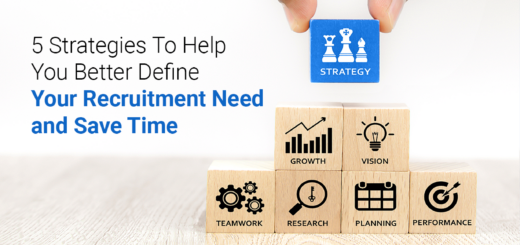Master the Art of Crafting Effective Job Descriptions

In the HR world, creating a job description is more than just defining duties and responsibilities; It is an art form that demands refinement and precision. A well-crafted job description acts as a bridge between a company’s needs and the right talent. It’s not just a laundry list of things to do; It is a tool that can attract top candidates and set the stage for a successful employee journey. In this blog, we will explore the complexities of effective job descriptions that are relevant to today’s workforce.
What is the job description?
A job description is a detailed document outlining the roles, responsibilities, skills, and expectations associated with a particular position in an organization that forms the basis for recruitment, performance appraisal, and professional development.
What are the main objectives of the job description?
A well-designed job description has several goals:
- Clarity: Clearly define the project’s purpose, function, and objectives.
- Direction: Provide strategic expectations and responsibilities.
- Recruitment: Attract suitable candidates by accurately describing the nature and requirements of the position.
- Alignment: Ensure employees understand how their roles contribute to achieving organizational goals.
- Performance appraisal: It is a measure of performance.
Why is job description important?
Job descriptions lay the foundation for effective human resource management. They:
- Enhance communication: Detailed explanations ensure that management and employees are on the same page about expectations.
- Recruiting Help: Accurate presentations help HR professionals attract candidates whose skills match the job requirements.
- Reduce legal risk: Clearly defining job responsibilities can prevent misunderstandings and potential legal issues.
- Increase productivity: Employees whose roles are well-defined are more productive and engaged.
- Enable growth: A clear career path outlined in a job description can motivate employees to strive for growth.
What are job responsibilities?
Job responsibilities include the duties, tasks, and activities an employee is expected to perform. These are specific behaviors that contribute to the success of the team and the organization as a whole.
Job Description vs. Job Responsibilities
While job responsibilities focus on specific tasks that an employee must perform, job descriptions provide a broader context. Definitions include responsibilities, competencies, reporting structures, and sometimes company values and culture.
What is a Job Description Format?
A typical job description format includes the following sections:
- Job Title and Department: Clearly state the role’s title and the department it belongs to.
- Summary/Objective: Give an overview of the role’s purpose and primary responsibilities.
- Responsibilities: List specific duties and tasks the role entails.
- Qualifications: Outline the necessary skills, experience, and education.
- Reporting Structure: Specify who the role reports to and who, if any, will report to this role.
- Physical Demands: Describe any physical requirements of the job.
- Salary Range: Provide a salary range or indicate where the candidate can find this information.
- Benefits and Perks: Highlight any benefits or perks associated with the role.
- Company Culture: Optionally, describe the company’s values and culture.
- Application Instructions: Explain how candidates can apply for the job position.
Why Should You Use a Job Description Format?
A structured format ensures consistency and clarity across job descriptions. It enables candidates to understand the role’s expectations quickly and helps HR professionals maintain uniformity in their documentation.
An Example of a Job Description
Here’s an example of a job description for a Marketing Manager role:
Job Title: Marketing Manager
Department: Marketing
Summary/Objective: The Marketing Manager will lead our marketing initiatives, develop strategies to enhance brand visibility, and drive customer engagement.
Responsibilities:
- Develop and execute comprehensive marketing plans, including digital campaigns, events, and partnerships.
- Analyze market trends and competitor strategies to identify growth opportunities.
- Manage a team of 3-4 marketing professionals, providing guidance and fostering their professional growth.
- Collaborate with different teams to align marketing efforts with overall business goals.
- Monitor and report on campaign performance, adjusting strategies as needed.
- Oversee the creation of marketing collateral, ensuring brand consistency.
- Develop and manage the marketing budget.
Qualifications:
- Bachelor’s degree in Marketing or relevant field; Master’s degree preferred.
- Proven experience in a marketing leadership role.
- Strong analytical and problem-solving skills.
- Proficiency in digital marketing platforms and tools.
- Excellent communication and interpersonal skills.
Reporting Structure: Reports to the Director of Marketing.
Physical Demands: This role may require occasional travel for industry events.
Salary Range: $70,000 – $90,000, commensurate with experience.
Benefits and Perks: Health insurance, retirement plan, flexible work hours.
Company Culture: We value innovation, collaboration, and continuous learning.
Application Instructions: Interested candidates can submit their resume/CV and a cover letter to [email address] by [application deadline].
How Can HR Leaders Write High-Quality Job Descriptions?
- Collaborate: Work with the hiring manager and team to understand the role’s nuances and expectations.
- Use Action Words: Employ strong verbs to convey the active nature of the role’s responsibilities.
- Focus on Outcomes: Highlight the impact of the role on the organization’s goals.
- Be Concise: Use clear, concise language to avoid overwhelming candidates with unnecessary details.
- Quantify Achievements: Quantify achievements to demonstrate the candidate’s potential impact whenever possible.
- Avoid Bias: Use inclusive language to attract a diverse pool of candidates.
- Update Regularly: Job descriptions should evolve with the role; review and update them as necessary.
Why Creating High-Quality Job Descriptions Should be a part of your HR Strategy?
Talent acquisition and retention are essential in today’s HR landscape. High-quality job descriptions are not just documents but strategic tools that can shape a company’s workforce. By creating concrete and solid descriptions, HR leaders can attract top talent, ensure role clarity, and foster a culture of growth and excellence.
Creating an effective job description is a skill that requires understanding the essence of the role, aligning it with organizational goals, and communicating it to potential employees. It is the first step in a successful employee journey that spans from recruitment to performance, growth, and mutual success. By mastering this art, HR professionals can transform their organizations and contribute to the success of their teams and businesses.
Frequently Answered Questions (FAQs)
Q1: What is in a job description?
A job description includes the job title, role summary, responsibilities, qualifications, reporting structure, physical demands, salary range, benefits, company culture, and application instructions.
Q2: What is the best job description format?
The best format includes a clear job title, concise summary, bullet-pointed responsibilities, qualifications, reporting structure, physical demands (if applicable), salary range, benefits, company culture, and application details.
Q3: How do I write a job description for myself?
Write a self-description by stating your title, summarizing your role, and listing tasks, qualifications, reporting structure, physical demands, salary expectations, benefits, cultural fit, and application steps (if sharing externally).
Q4: How should I fill in a job description?
Fill in a job description accurately and precisely with clear language, action verbs, outcome-oriented points, and minimal jargon. Keep it concise, updated, and aligned with the role’s responsibilities.



